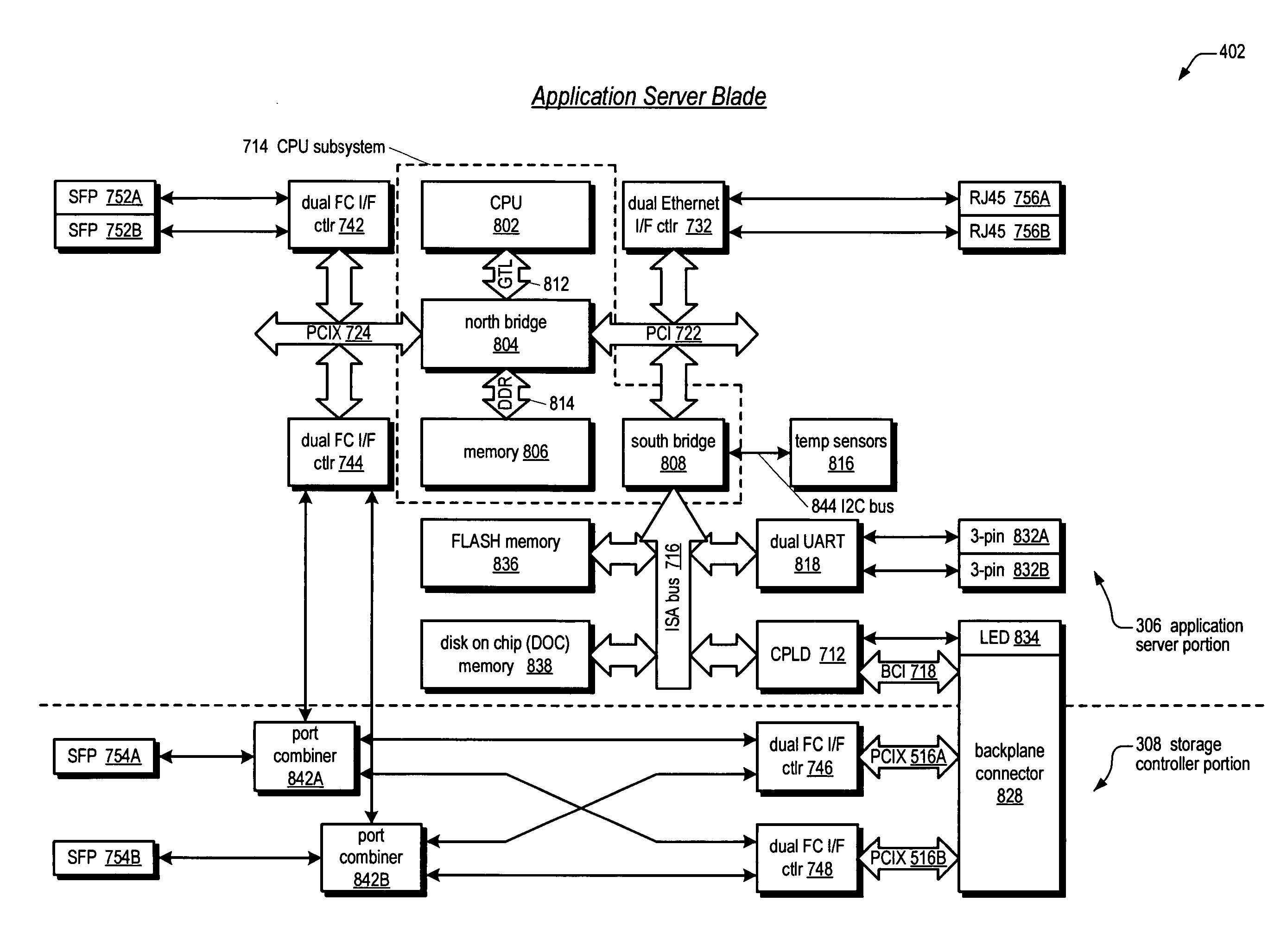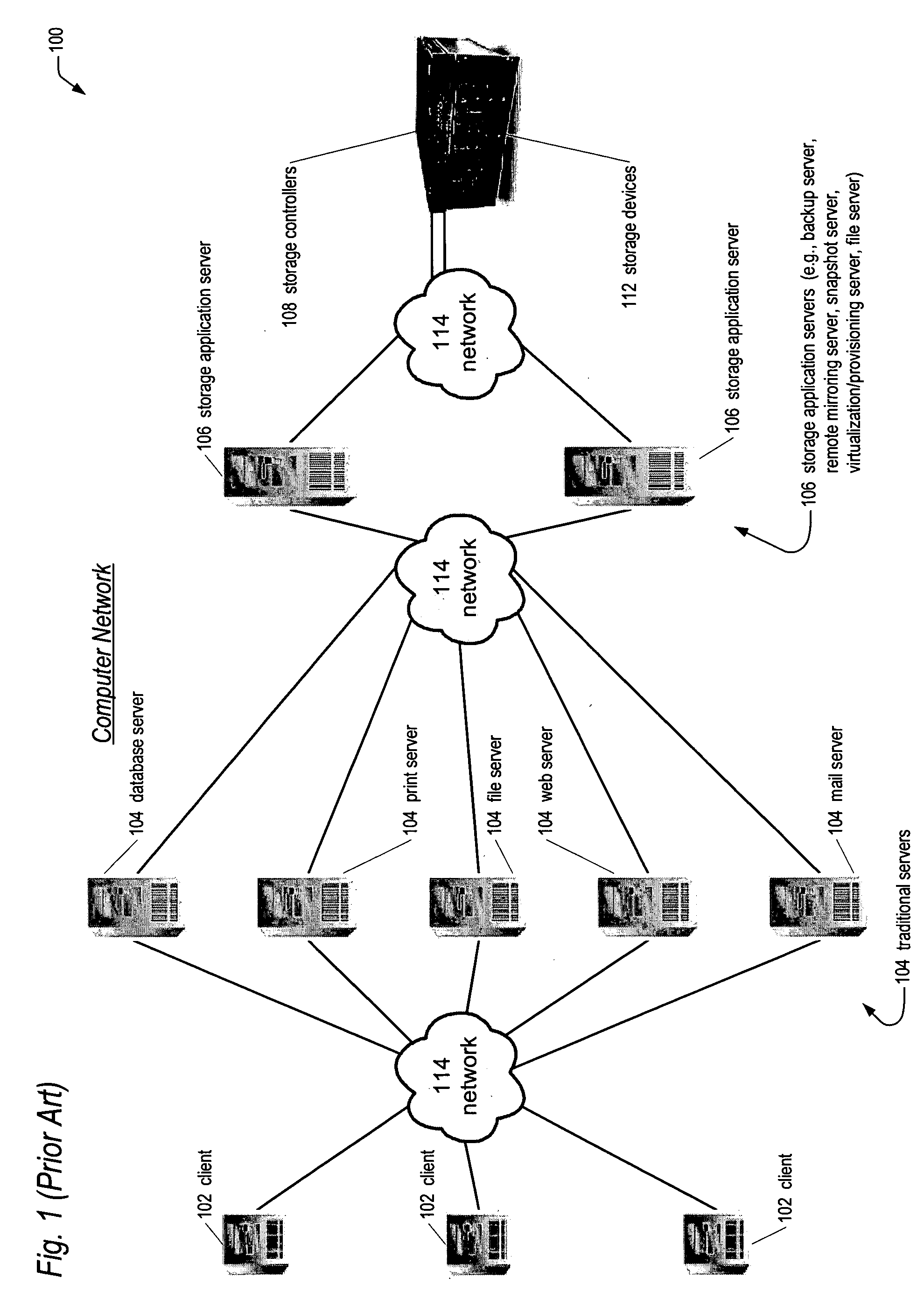Application server blade for embedded storage appliance
a technology of embedded storage and server blades, which is applied in the field of server computers, can solve the problems of inefficient use of storage devices, waste of remaining space, and difficulty in managing storage devices for potentially many computers in the network, and achieves the effects of reducing software development time and cost, small software development effort, and facilitating software reus
- Summary
- Abstract
- Description
- Claims
- Application Information
AI Technical Summary
Benefits of technology
Problems solved by technology
Method used
Image
Examples
Embodiment Construction
[0040] Referring now to FIG. 1, a diagram of a prior art computer network 100 is shown. The computer network 100 includes a plurality of client computers 102 coupled to a plurality of traditional server computers 104 via a network 114. The network 114 components may include switches, hubs, routers, and the like. The computer network 100 also includes a plurality of storage application servers 106 coupled to the traditional servers 104 via the network 114. The computer network 100 also includes one or more storage controllers 108 coupled to the storage application servers 106 via the network 114. The computer network 100 also includes storage devices 112 coupled to the storage controllers 108.
[0041] The clients 102 may include, but are not limited to workstations, personal computers, notebook computers, or personal digital assistants (PDAs), and the like. Typically, the clients 102 are used by end users to perform computing tasks, including but not limited to, word processing, datab...
PUM
 Login to View More
Login to View More Abstract
Description
Claims
Application Information
 Login to View More
Login to View More - R&D
- Intellectual Property
- Life Sciences
- Materials
- Tech Scout
- Unparalleled Data Quality
- Higher Quality Content
- 60% Fewer Hallucinations
Browse by: Latest US Patents, China's latest patents, Technical Efficacy Thesaurus, Application Domain, Technology Topic, Popular Technical Reports.
© 2025 PatSnap. All rights reserved.Legal|Privacy policy|Modern Slavery Act Transparency Statement|Sitemap|About US| Contact US: help@patsnap.com



